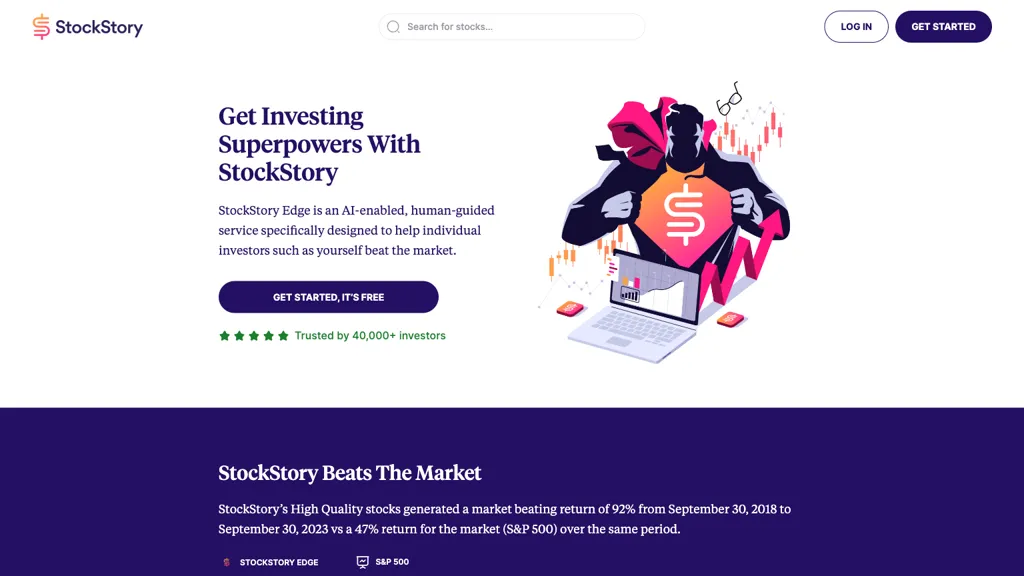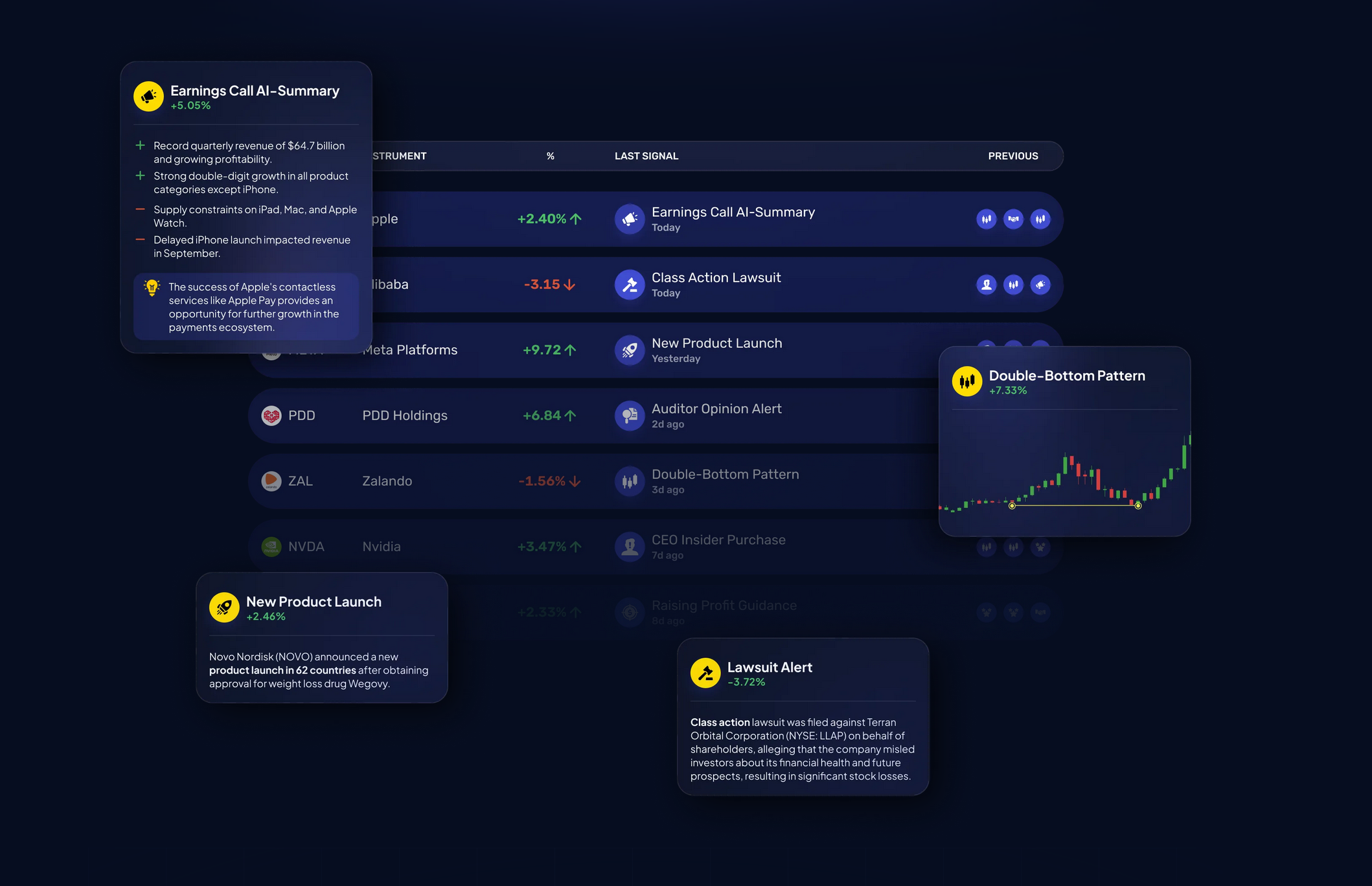Privacy and security are the top priorities when making use of AI platform for stock prediction and analysis since they are often handling sensitive financial information as well as personal data. Data breaches or misuse of data can result in financial losses and reputational damage. Here are 10 tips to assess the privacy and security of these websites.
1. Examine the encryption of data
Transmitting encrypted data: Ensure that your platform is using encryption protocols that are secure (e.g. TLS/SSL) to secure data transferred between your device and the servers.
Transporting encrypted data Make sure that the information stored on a platform's servers has been encrypted with strong encryption standards, like AES-256.
End-to-end encryption: Determine whether the platform supports end-to-end encryption of sensitive communications or data.
2. Examine the Authentication Mechanisms
Two-factor verification (copyright) Make sure whether the platform is compatible with copyright for an added layer of security.
Find out about biometric authentication options available for mobile apps (e.g. facial recognition or fingerprint).
Password policies. Check if the platform has strong password policies (e.g., length minimum, minimum complexity, etc.).
3. Examine for Compliance
Financial regulations: Make sure your platform is compliant with all relevant financial laws (e.g. SEC FINRA MiFID II).
Data protection laws: Check for compliance with data privacy laws (e.g., GDPR, CCPA) if you are in or trading with regions covered by these laws.
Audit certifications. Check whether the platform is certified by security third-party assessments or is certified (e.g. SOC 2 and ISO 27001).
Review Controls for Access to Data
Role-based Access: Make sure your platform uses control based on role (RBAC) in order to restrict data access to authorized users.
Verify if you are able to create different levels of permission for users or teams.
Activity monitoring Check to determine whether your platform is monitoring and tracking the user's activities.
5. Assess Vulnerability and Management
Regular updates: Ensure that your platform is updated regularly its software to fix weaknesses.
Penetration test: See if your platform is regularly tested to detect and fix any security weaknesses.
Programs for bug bounty: See whether the platform has an incentive program for bug bounty to encourage security researchers from outside to disclose weaknesses.
6. Evaluate Data Privacy Policies
Transparency. Read the platform's Privacy Policy to understand what data is being collected and how it is utilized.
Data minimization: Only collect data required for the platform's functionality.
Third-party sharing: Check if the platform shares data with third parties, and If so the conditions under which it is shared.
7. Secure API use can be monitored
API security - Ensure that the API of your platform employs secured authentication methods, like OAuth or API keys, and also encrypts any data exchanges.
Limiting the rate. Verify the API's rate limitation to avoid the abuse.
Access logs: See whether the platform is recording API access and use for auditing and monitoring.
8. Review Incident Response and Recovery
Incident response plan - Ensure that the platform is outfitted with a plan of action to deal with security breaches, data breaches, or other incidents.
Review the platform's notification policy to determine if it informs users promptly if there is a breach of security.
Check the data backups and Disaster recovery plans.
9. Assess Physical Security Measures
Data center security Check that the servers that run your platform are situated in data centers with physical security measures including access control and surveillance.
Redundancy - Verify that your platform is outfitted with redundant systems in order to ensure that data is available when hardware fails.
Geographic distribution: To improve resilience, make sure that the information is spread over different places.
10. Test privacy controls for users
Data deletion. Make sure you can permanently delete data from the platform once you end your use of the service.
Privacy settings - Check to see if the platform allows you to set privacy settings so that you to decide which information will be shared or visible.
Anonymization: Verify if data is being used to anonymize for machine learning or analytics.
Bonus Tips
Review and feedback of users to assess the platform's security and privacy.
Trial period: Take advantage of a free trial or demo to try out the security features and privacy controls.
Customer Support: Ensure whether the platform is able to provide robust support for security issues.
With these suggestions, you can effectively assess the privacy and security of AI stock Predicting/Analyzing trading platforms to ensure that your information and financial details are protected. A secure trading platform is not only a method to safeguard your assets, but it also builds confidence and trust. Take a look at the top AI stocks for website recommendations including AI stock picker, investing ai, chatgpt copyright, ai for investing, best AI stock trading bot free, AI stock trading bot free, ai for trading, best ai trading software, AI stock trading bot free, best AI stock trading bot free and more.

Top 10 Tips On How To Evaluate The Speed And Latency Of The Ai Technology For Predicting And Analyzing Stocks
The speed and the latency of a trading platform is a crucial factor to be considered, especially for active traders, algorithmic and high-frequency investors. Milliseconds could affect the execution of trades and even profitability. Below are the top 10 tips for assessing latency and speed on these platforms:
1. Real-Time data feeds can be used to assess the quality of the real-time data you have
Data delivery: Check that the platform is able to provide data in real-time, with minimal delay (e.g. less than milliseconds).
Closeness of data source: Determine if servers are located close to major exchanges.
Data compression: Check whether the platform is using efficient data compression techniques to speed up data delivery.
2. Speed of execution test for trades
Order processing time The amount of time that it takes the platform to process and complete trades after you've submitted an order.
Direct Market Access: Make sure that the platform you are using offers DMA. DMA is a feature which allows you to transfer orders directly to exchanges without intermediaries.
Look for more detailed reporting on execution, which includes timestamps and confirmations of your order.
3. Assess Platform Receptiveness
User interface (UI speed) Test how quickly the platform responds to inputs like clicking buttons, or loading charts.
Chart updates - Make sure that the charts are updated immediately and without lag.
Performance of mobile apps When you are using a mobile application make sure it runs as quickly as the desktop version.
4. Look for infrastructure with low latency.
Locations of the servers The platform must use high-speed, low-latency servers that are located close to major exchanges or financial hubs.
Co-location: If the platform allows co-location, then you can place your trading algorithm on servers near the exchange.
High-speed networks: Make sure that the platform is using fiber optic networks with high-speed speeds or low-latency technology.
5. Evaluating Simulation and Backtesting speed
Test the speed at which your platform can analyse and analyze the historical data.
Simultaneous simulation of trades The platform must be capable of simulated real-time trading without any apparent delay.
Parallel processing: Make sure the platform is using parallel processing, or distributed computing, to speed up complex computations.
6. Assessment of API Latency
API response time: Measuring how quickly the platform’s API responds (e.g. retrieving market data or placing orders).
Rate limits: Ensure that the API has adequate limits on rates to prevent delays when trading at high frequency takes place.
WebSocket Check if the platform supports WebSocket protocols which permit streaming of data in real-time with low latency.
7. Test Platform Stability During Loading
High-volume trades Test the platform's responsiveness and stability, simulate high-volume scenarios.
Market volatility: Test out the platform during periods of high volatility to determine if it is able to manage rapid price shifts.
Test your strategy for stress: Find out if the platform allows you to test your plan under extreme circumstances.
8. Evaluate Network and Connectivity
Speed requirements for internet: Check that your internet connection meets the platform's recommended speed to achieve maximum performance.
Redundant connections: Check if the platform can support redundant internet connections to prevent interruptions.
VPN latency: If you use a VPN check if it introduces significant latency, and if the service has alternatives.
9. Make sure you are aware of features that speed-optimize your computer.
Pre-trade analytics: Make sure the platform provides pre-trade analytics to optimize the speed of execution and order routing.
Smart order routing (SOR) often referred to as smart order routing is a method for determining the most efficient and efficient execution sites.
Monitoring latency Make sure your platform permits you to track and analyze your latency in real-time.
10. Review Feedback from Users and Benchmarks
User feedback: Read reviews from users to assess the platform's performance in terms of the speed of its operation and latency.
Third-party benchmarks: Look for independent benchmarks or reviews that compare the platform's speed to competitors.
Case studies: Check if the platform offers cases studies or testimonials, that highlight its abilities to provide low-latency.
Bonus Tips
Trial period: Try an unpaid trial or demo to test the platform's speed and latency in actual scenarios.
Customer support: Check to find out if the platform offers support for latency issues or for optimization.
Hardware requirements: Find out if the platform requires specific hardware to ensure maximum performance.
These guidelines will assist you evaluate the speed and latencies of AI software for predicting and analyzing stocks. In this way you'll be able choose a platform which meets your requirements while minimizing delays. A low latency is essential for high-frequency or algorithmic traders where even a small delay could affect their profitability. Have a look at the most popular stock trading ai for website tips including free AI stock picker, best ai for stock trading, can ai predict stock market, ai tools for trading, ai options trading, AI stock price prediction, ai trading tool, AI stock investing, how to use ai for stock trading, invest ai and more.
